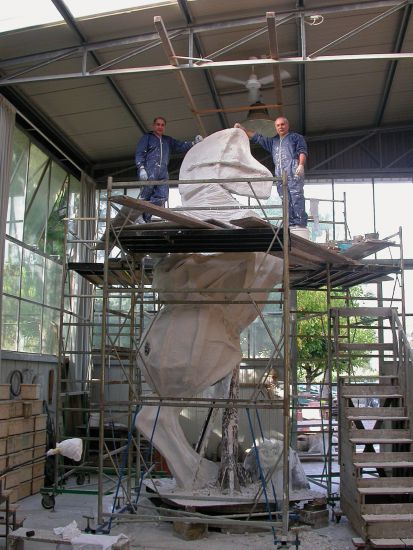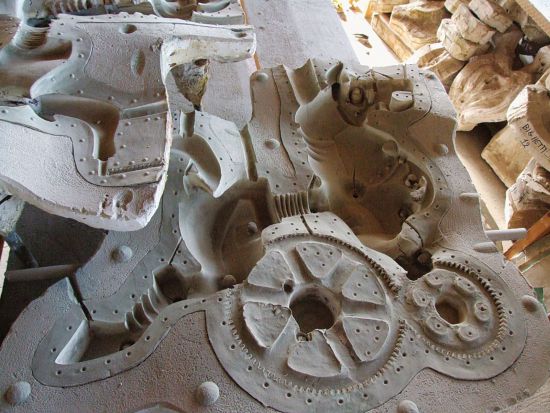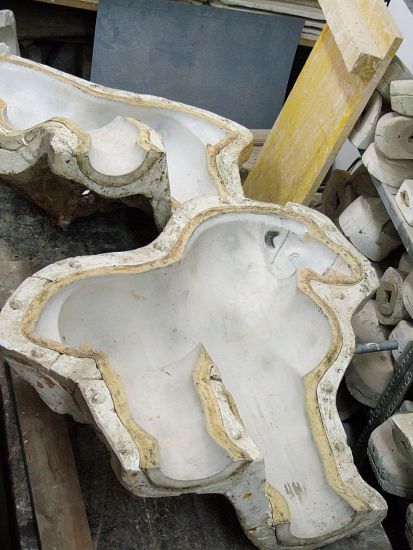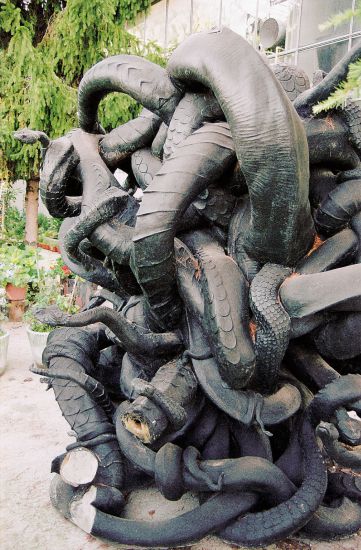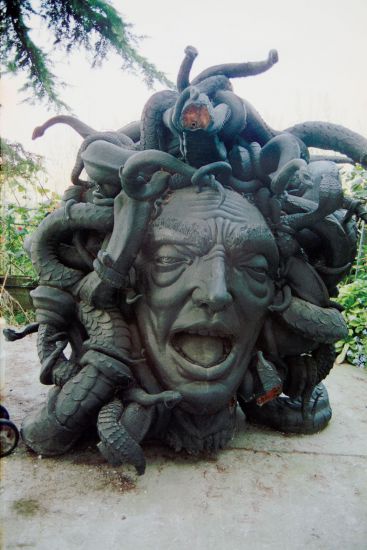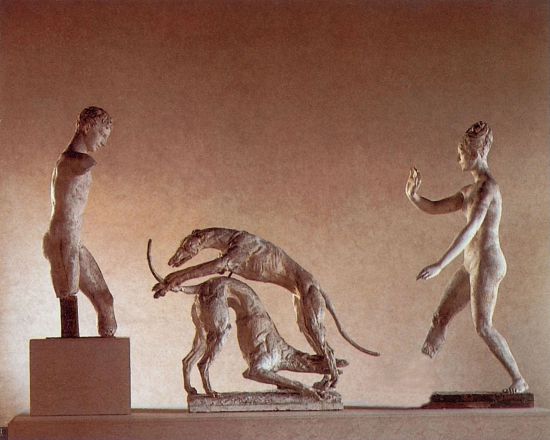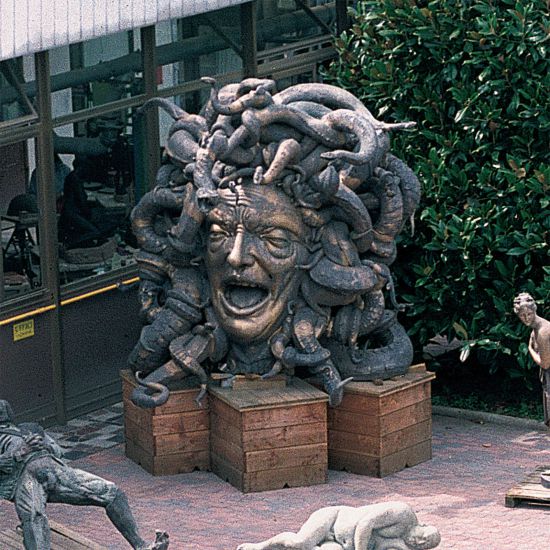Molding and Negative Mold
This phase is carried out entirely by the craftsmen. A layer of rubber is spread over the original copy, which, once catalyzed (dried) is strengthened with a steel pipe, plaster shell: this plaster and rubber covering is known as the “mold”. The rubber is the work’s negative.
The making of a mold takes longer the more complex the actual work of art is; it is rarely made up of one single piece and therefore it is necessary to decide how many and which parts are to be divided. The task’s difficulty also depends on whether or not the original may or may not be cut.
The original copy is cut only when strictly necessary and only when its cutting will not prevent the whole being restored together at the end.
A work of art like Alessandro Romano’s ‘Medusa’ cannot be reproduced in bronze as the original cannot be cut. In fact, the mold was realized in more than one hundred pieces.
The ‘Grifo’ mold was made without being able to cut the original copy; likewise, work went ahead with the pair of dogs of the group plaster sculpture ‘Diana and Aucone’ made by Libero Andreotti. In the latter case, (where it was not even possible to cut the tail) a special molding system was created for the purpose.

